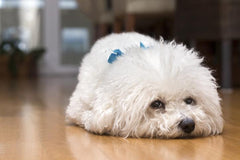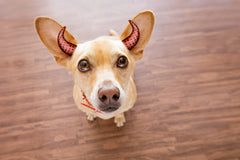
Creating a Schedule For Your Puppy
Bringing home a puppy is a huge decision, and you need to be ready for life to change quite a bit. The first few months or so will have to be pretty scheduled for you to successfully potty train and have your furbaby transition smoothly to living with you.
But how do you develop this schedule, and what should you expect?
Expectations
Do not expect your puppy to be potty trained immediately. There will be accidents. Investing in a carpet steamer may be smart!
Remember that cute little habits of puppyhood are not cute when performed by a grown dog. (A puppy carrying your shoe around is cute; your dog destroying your shoe is not cute.)
You will have to be home regularly to maintain your new schedule. If this is not possible, make sure to find puppy help through a friend, family member, or trainer.
You can also expect to have your patience tested each day; you may even question your ability to be a dog parent, but the days will fly by and you’ll understand just how amazing that pup is!

Creating a Schedule
It is recommended to crate train your puppy because a crate acts as your pup’s safe place. It also prevents accidents from happening all over your house. Throughout the first month (or more), your puppy should be within 5 feet of you at all times, or he should be in his crate. You can connect a leash to your belt loop if it will help! This allows you to always have your eye on him and to constantly be working on training commands. If you are going to be in one room for awhile, you can let him roam around while you complete your tasks.
The American Kennel Club suggests the following when creating your daily schedule:
- First thing in the morning: Take the puppy out to relieve himself. If you have a little time, it’s also a good time to play and interact with him.
- Breakfast time: Wash his water bowl and give him clean water when you feed him.
- After breakfast: Although everyone is busy in the morning getting ready for work or school, a quick walk after breakfast gives him a chance to do his business one more time.
- Mid-morning: The rest of the morning might be devoted to nap time. If you’re home during the day, your puppy may want to hang out with you while you’re working or doing your morning chores. He’ll also need to go out at least one more time before lunch. If everyone leaves the house for the day, consider having a pet sitter to come in and walk him.
- Noon: Lunchtime. Naturally, a trip outside should follow a meal.
- Mid-afternoon: It’s probably nap time again. And then time to go out — again.
- Dinner: If you arrange his mealtimes around yours, it will become natural to feed him either while you’re preparing dinner or while the household is eating.
- Evening: Potty break, of course. The early evening is a good time for play and lots of interaction. You also want to let him burn off some puppy energy before bedtime. If you have time, an evening stroll gives him exercise and a chance to take a potty break. But schedule at least a few minutes outdoors before bed.
- Bedtime: A set bedtime makes his adjustment and house training easier for everyone; whether it’s 8 p.m. or midnight, it doesn’t matter, as long as it becomes a routine. Take him to his crate and help him settle down for the night.




Leave a comment